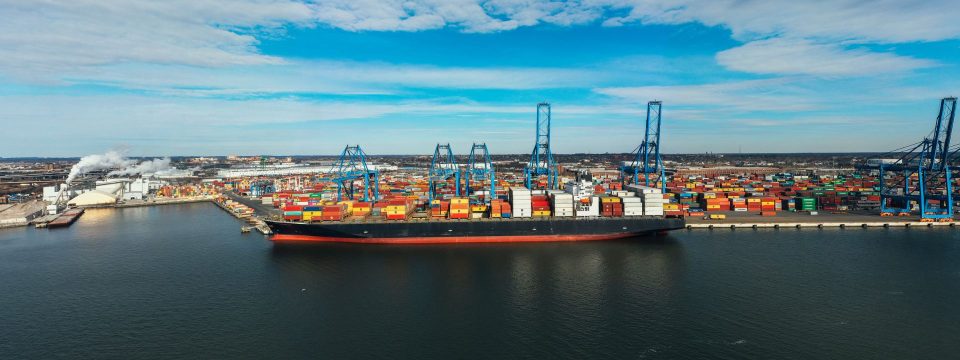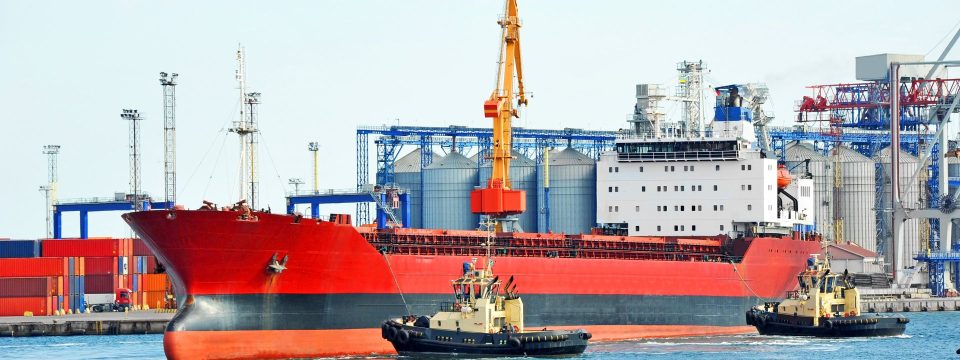The 13 Most Frequently Asked Questions We Receive from Importers and Exporters
October 28, 2022 Beginners Guides

After servicing clients across a range of sectors for many decades, we have noticed common questions that importers and exporters ask about freight. We’ve put together a list of the 13 most frequently asked questions about freight that we receive from importers and exporters.
1. Why are freight rates so unstable?
A very common question we receive is ‘Why do freight rates go up and down so much?’. Unfortunately, there is no one answer.
Freight rates are affected by many various factors. These include:
- fluctuations in the time of year you are shipping (including Peak Season from September to January);
- fluctuations in fuel charges; (Check out our blog on The IMO 2020 regulation for example) and
- changes in demand (for instance, rates can go up when shippers fight for limited space on cargo vessels).
Forwarders will often use different shipping lines and may propose different solutions based on the contracts they have in place with carriers. This will all affect the freight rates on offer in the market.
2. What is the usual waiting time at the wharf in Australia?
Most transport companies offer 45 minutes’ free time at the wharf. Sometimes referred to as “Waiting Time” or “Demurrage”.
Ports offer booking slots and aim to process container and freight collections within this timeframe.
Having said this, depending on the demand, trucking companies can end up waiting for one, two or even three hours trying to collect cargo. In a U.S. study, it was found that the time that truck drivers wait at docks is increasing (sometimes as long as six hours), causing a rise in transport and consumer costs.
Often the additional charges associated with waiting, called demurrage, will be passed on to the importer. Check out our blog on the hidden costs of shipping for more information.
3. What happens if my goods get damaged?
If you are covered by marine insurance – you can claim on your insurance for the cost of your cargo. On receiving notification that the goods are damaged, your forwarder will issue what’s called an “Intent to claim” to the cargo handler (which may be the airline, shipping line or co-loader).
An “Intent to Claim” identifies that damage has occurred and usually launches an investigation into how and where the goods were damaged.
If you do not have marine insurance – you are exposed to the full cost of your cargo and related shipping charges.
We strongly recommend that you purchase a marine insurance policy, this will ensure your losses are kept to a minimum in the event of an accident. You should also look to your incoterms to identify which party is responsible for insuring the cargo throughout its journey.
4. Why is my cargo delayed?
Cargo can be delayed for many reasons. This is usually one of the more frustrating sides of international shipping. Some of the common reasons we see for delays are as follows:
- Conflicting supplier and buyer timetables. Often, suppliers will provide an ambitious cargo ready date in order to secure an order with a buyer. If this date moves, shipping timelines will change accordingly.
- Rolling of cargo. Sometimes cargo will ‘roll’ (i.e. will get moved to another ship). Shipping lines will accept an over demand of cargo and roll containers to the next ship to ensure they are running at capacity. With air freight, this can also be an issue. Airlines will accept cargo into the airport but can opt to roll your cargo if the goods do not fit comfortably with the other cargo or if the total weight exceeds the airline allowance. Once your cargo has been lodged at the airport or port there are limited options for moving on a different vessel or with a different carrier.
- Congestion at transhipment point. Certain global ports are renowned for heavy congestion. Singapore and Port Klang are prime examples of ports that become over-congested in peak season. Congestion causes delays when cargo vessels are looking to dock and unload. If containers are not offloaded within their specified timeframe, connecting vessels can also be missed compounding the problem of congestion over many months.
- Tight timeframes at transhipment points. Sometimes vessel schedules have only allowed a short period of time between connecting shipments. If one vessel arrives in a port in the morning, and the cut off for the connecting vessel is the same day in the afternoon, the schedule can be too tight to meet. When this happens, cargo will often have to wait a week in the transhipment port for the next connecting vessel. The good news is that there are no charges applicable at a transhipment port so no one is responsible for paying as such.
- Customs hold on arrival. Customs can opt to hold cargo for an inspection or merely to review paperwork. It is therefore crucial you do as much as possible to ensure paperwork is accurate and submitted to your forwarder prior to arrival. Check out our shipping document blog for more information.
- Quarantine on arrival. Goods can be held if they pose a biosecurity risk or if cargo needs to be inspected by Quarantine. In these circumstances, cargo can be directed to an approved quarantine facility under bond for inspection and potential treatment before release. The costs of this process will also have to be covered by the importer/exporter.
- Delays at airport/port on collection. Just because your cargo has landed and the transport company has a slot for collection, it doesn’t mean that the port or airport will not be delayed. We have seen instances where our drivers arrive for a timeslot and have had to wait up to three hours before they are loaded. In this instance demurrage charges will apply. Your forwarder will work hard to mitigate the impact on your business but delays at a third-party site can be out of their control.
5. What is the “lead time”?
“Lead Time” is a term used in shipping to describe the transportation time from point A to point B.
In shipping, it is mainly used to describe the interval from the date of departure to the date of arrival at the destination port or airport.
Lead times will vary between different origins and destinations. When your forwarder provides you with a quotation, they will often be able to state the lead time for the shipment.
6. What the best incoterm for me out of China?
China is one of Australia’s major trading partners.
When choosing an incoterm for delivery to or from China, you should aim to have as much control of your shipping (and costs!) as possible.
On this basis, we would always recommend comparing prices on EXW and FOB terms. It is likely, if you are new to shipping, that your supplier will recommend purchasing on CFR or DAP terms. When shipping on CFR or DAP terms your supplier may introduce additional profit into the freight aspect of the shipping or simply choose a routing or shipping option that is not best for you.
To avoid overpaying for your shipping you should always compare incoterm pricing, which your forwarder will be more than happy to assist with.
7. How does shipping work when you are not a global company?
It does not matter if your business is not global. You can still engage in international trade like any other company. In fact, we have dedicated an entire blog to answer this question.
The benefit for customers who engage ICE is that we work with a worldwide network of agents. We can select the best agent to handle your cargo and work with your supplier locally.
We communicate with our partners about shipping daily. Our agents overseas are just an extension of our business.
ICE is an Australian-based Independent Forwarder with selected partners across the globe. Working with a global forwarder, you get the benefit of worldwide cover but if the local office overseas is not delivering, the business has no alternative option to offer you.
Instead, ICE chose an appropriate agent based on your profile and can change the local agent if their offer does not suit the needs of your business.
Our agents will deal with your suppliers locally and will communicate back to ICE directly so we can keep you abreast of all your shipping movements from the moment of order placement to delivery.
You can read up on the difference between independent forwarders and multinational forwarders here.
8. Who will speak directly to my supplier?
Our selected local agent will communicate directly to your supplier in the same language and timezone. Our agent will then keep us informed of developments and this will be fed back to you by your local ICE representative.
If you don’t have a supplier or are in the process of sourcing one, check our blog How To Source International Suppliers And Partners From Australia.
9. What are the origin charges in Australia?
An ‘origin charge’ is a charge levied by your freight forwarder to handle your cargo. This is for both imports into Australia and exports overseas.
When you receive a quote or an invoice from your forwarder, you may see references to these charges. They cover costs incurred for services provided before a shipment, all the way up to the port or airport.
Whether or not you are liable to pay origin charges depends on the ‘Incoterms’ under which your shipment is moving (see our Beginner’s Guide to the Incoterms to understand what they are). For example, if you’re working under an EXW shipping term, origin charges will cover:
- collection from supplier and delivery to port or airport;
- documentation fees;
- export customs clearance handling; and
- port charges or airline handling charges.
Generally, it is best for an importer and supplier to agree on which party should be responsible for paying these charges prior to shipping.
10. When can I expect my cargo to be delivered after arrival?
The answer to this question varies on a case-by-case basis.
Timeframe for delivery will depend on if your goods are traveling by air or sea and, if traveling by sea, whether they are LCL or FCL Shipments (see our Glossary to confirm what those terms mean).
Subject to custom or quarantine holds, you should allow the following days after arrival for your cargo to be delivered:
- LCL Shipments (3- 6 days after date of arrival) – With LCL shipments. goods need to be unpacked on arrival and goods segregated for collection.
- FCL Shipments (2 days after arrival) – This allows enough time for containers to be unloaded off the vessel and made available for collection.
- Air Shipments (1 day after date of arrival) – This allows enough time for airfreight to be offloaded at the airline and transferred to a cargo terminal operator ready for collection.
You can see the full breakdown of the cargo process, from the port to the warehouse here. Please note, this is simply a guide and you should revert to your forwarder for exact ETAs.
11. How do you handle shipments end to end?
Depending on shipping terms, when an order is placed with your supplier, our local agent will make contact to arrange collection and export clearance.
We can then provide a shipping schedule to suit you, including:
- Tracking your cargo throughout the duration of the shipment;
- Pre-clearing before arrival;
- Arranging collection from the port/airport; and
- Booking the final delivery.
For further information, please read our blog “How Shipping Works” to fully understand the entire shipping process.
12. What are the highest costs involved in air and sea freight?
The cost of shipping varies on a case-by-case basis.
Usually, the freight element of the shipping or handling at the local port or airport will contribute heavily to your overall charges. Charges will always be dependent on the size of your consignment, weight and volume.
You should always request a cost from your forwarder before shipping so you are aware of your outlay. You should also be aware of charges that may not have been included in your quotation as they are unforeseen (check out our hidden costs of shipping blog).
13. When do I have to pay for shipping?
As an importer or exporter, you should always be prepared to pay for shipping activity upfront.
Your forwarder will be required to pay the shipping line and airline directly within a similar timeframe and therefore will likely request payment to match.
Invoices are often divided between freight costs and customs charges. Your customs charges will need to be settled before your shipment can be released.
Bonus Question: What is a Shipper’s Letter of Instruction?
A Shipper’s Letter of Instruction (SLI) is a document is designed to detail all the requirements of your shipment from start to finish. When organising your export overseas, your freight forwarder will request you to have this document completed.
While the SLI is not a mandatory document or a legally binding document,it is strongly recommended to provide your shipper’s letter of instruction to your freight forwarder as it is a way to formalise how and where to handle the export shipment. It also grants permission to the forwarder to act as the authorized forwarding agent for export control and customs.
Have another question?
If you have another question that isn’t on this list, please feel free to get in touch with one of our friendly ICE team members on 1300 CARGO1.
Request A Quoteor call us on 1300 227 461

We Consult. We Plan. We Deliver.
- CONSULT – We discuss your specific needs.
- PLAN – We develop a bespoke tailored plan that is cost-effective & efficient.
- DELIVER – We manage your shipment and keep you updated from beginning to end.


